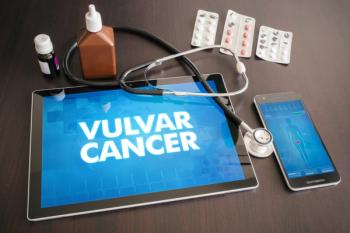
Cervical Cancer
OBGYN.net Conference CoverageFrom First Congress on Controversies in Obstetrics, Gynecology & Infertility Prague CZECH REPUBLIC - October, 1999
Dr. Mark Perloe: "I'm with Dr. Stafl from the Medical College of Wisconsin in Milwaukee. I need to thank you, while I'm now doing reproductive endocrinology and don't look at too many cervixes, back in the mid-seventies I had the opportunity to visit your clinic as a resident and learn about colposcopy. Many things have changed in our understanding of cervical cancer and it's detection, causes, and prevention. I wonder if you might speak about some of that."
Dr. Adolf Stafl: "I am quite surprised, I didn't remember that you visited us in Milwaukee. Really in the early 1970's we started with colposcopy in the United States. As you know, in Europe this was an advantage, which was developed by Hinselmann in 1929, and it was a method that was considered to be competitive to cytology. When we introduced colposcopy in the United States, our aim was not to use it as a competitive method to cytology but as a method for evaluation of patients who have an abnormal Pap smear. Without any question, the Pap smear is the most acquired best method, and economical method for cervical cancer detection. For evaluation of patients with an abnormal Pap smear, colposcopy has a lot of advantages. Now the problem in recent years was that the number of slightly abnormal Pap smears or so called "ASCUS" or low grade SIL, increased significantly. The National Institute of Health estimated that the evaluation of a patient with an abnormal Pap smear is around three billion dollars. This is of course, a sum which here in the most richest country, they cannot afford. So now they are trying to find new ways, mainly better economical ways to evaluate patients with an abnormal Pap smear. The most acquired method without any question is colposcopy, and if it's too expensive, we have a lot of new methods. One is called "cervicography" which is based on the same principles as colposcopy where the instrument is de-fan-ned. Basically, the cervicograph is a kind of photographic camera and any gynecologist not trained in colposcopy can become a technician after a short training period, and by this I mean half-an-hour, he can take a microscopic picture of the cervix, and then this can be sent to an expert for evaluation. So the principle is similar to mammography, which again, the picture is taken by the technician and evaluate by the radiologist. By this technique, it is possible for the expert in colposcopy to evaluate about two-hundred patients in an hour so it is economically a very reasonable method."
Dr. Mark Perloe: "We have seen a combining of labs across the country so that the number of slides that a tech in a large commercial laboratory goes through is phenomenal. Do you find that there are quality issues in the screening, and do you find that these newer methods of doing the Pap smear offer any advantage?"
Dr. Adolf Stafl: "No question, about the biggest problem with the Pap smear is that the average cytology slides contains between 50,000 and 200,000 cells. Therefore, it is completely impossible for the cytopathologist to evaluate all these cells, and the cytopathologist depends on the work of cytotechnicians. Of course, in some of the laboratories the work of cytotechnicians and the results of cytology are examined. In some laboratories it is questionable, and unfortunately this problem cannot be solved because there are 50 or 200,000 cells there and somebody has to evaluate them. The cervicography is easier because the expert in cervicography projects the slide, evaluates the slice, and he can see the entire cervix in one view. It only takes thirty seconds for an expert evaluation. This is a big difference in comparison to cytology."
Dr. Mark Perloe: "Do you think from a cost standpoint, it's very easy to take a camera and download it or attach it to your Internet port for the transfer of information between the units? Right now it may be film that has to be transferred from one place to the other but eventually nothing will have to change hands as opposed to picking up a slide, sending it, and processing the slide. Once it all goes to digital, do you think there will be cost savings, and perhaps the cervicography will replace the Pap smear as a tool?"
Dr. Adolf Stafl: "Eventually in the future - yes, but so far the technology is not available because when you digitalize the picture, the apparent magnification is achieved by projection of the slide and by observing from a short distance. When you enlarge this digital image significantly, it goes to pixels but I am sure that it will be available because you know the spy satellite pictures can detect very small details, and now some of the military technology is declassified. I expect this possibility in the future, I am sure this will be possible but so far I haven't seen a lens which will provide sufficient magnification."
Dr. Mark Perloe: "There's also controversy once we find the higher stages of lesions regarding whether LEEP is an appropriate step or whether a laser condensation or a cold knife cone is appropriate. Would you give your view on each of these procedures?"
Dr. Adolf Stafl: "On the contrary, I think now it is very simple because in my opinion, I think LEEP is without any question the best method. And the laser condensation or laser vaporization is the absolute method also in cryosurgery and electrocautery. These are absolute methods because you don't have the specimen for evaluation, and if a mistake is done in the diagnostic procedure, like a micro-invasive carcinoma is overlooked, then a disaster will happen. This LEEP procedure or this LLETZ procedure according to Prendiville, the founder of this procedure, you have a specimen for the surgical evaluation so even if the physician misses a micro-invasive cancer, the pathologist will find it. This is an enormous advantage."
Dr. Mark Perloe: "As a physician who sees infertility patients, one of the problems I see following this is apparently a risk of cervical stenosis and cervical amputation by someone who may be less skilled. Have you seen this, and how are people best trained to avoid those complications?"
Dr. Adolf Stafl: "The biggest problem with the LEEP is over-treatment because the big danger is that - say a physician in family practice or internist has a patient with a slightly abnormal pap smear and the right ovary and half of the cervix is gone. This is a problem. Now when the LEEP is used in indicated procedures for the treatment of CIN, so far from the literature, the effect on the fertility is minimal. And for the very, very long term reports about advanced effects on fertility, we have to wait more years until we can analyze this long-time evaluation but so far it looks like the problem doesn't exist."
Dr. Mark Perloe: "Thank you."
Dr. Adolf Stafl: "Thank you."
Newsletter
Get the latest clinical updates, case studies, and expert commentary in obstetric and gynecologic care. Sign up now to stay informed.









